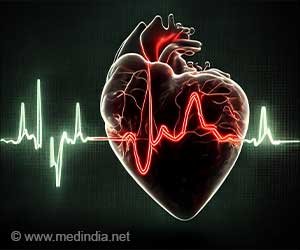Repairing the Damaged Heart Through Cell Programming

According to the researchers at Sanford Burnham Prebys in the United States, their results could assist in revolutionizing therapies for a variety of ailments, including cardiovascular, Parkinson’s, and neuromuscular diseases (
).
Cell Programming can Repair your Heart
Cellular programming, a developing strategy in regenerative medicine in which scientists modify cells to mend damaged or wounded body tissues, is based on the ability of body cells to ‘turn on’ and ‘turn off’ chosen genes, changing what they look like and what they do.
Advertisement
“Even if a person survives a heart attack, there could still be long-term damage to the heart that increases the risk of heart problems down the line,” said lead author Alexandre Colas, assistant professor, Sanford Burnham Prebys.
“Cellular reprogramming could, in theory, allow us to control the activity and appearance of any cell,” said Colas.
“This concept has huge implications in terms of helping the body regenerate itself, but barriers to reprogramming mechanisms have prevented the science from moving from the lab to the clinic,” said Colas.
Proteins that can Contribute to Cell Programming of a Damaged Heart
The researchers identified a group of four proteins, named AJSZ, that help solve this problem.
“By blocking the activity of these proteins, we were able to reduce scarring on the heart and induce a 50%improvement in overall heart function in mice that have undergone a heart attack,” said Colas.
While the researchers were especially interested in heart cells, they discovered that AJSZ could be found in all cell types, implying that it could be a good therapeutic target for a range of disorders.
“This breakthrough is a significant step forward on our way to turning these promising biological concepts into real treatments,” said Colas. The next steps in the research involve exploring multiple options to block AJSZ proteins from functioning.
“We need to find a way to inhibit these proteins in a way we can control to make sure we are only reprogramming the cells that need it,” said Colas.
“We will be screening for drugs that can help us inhibit these proteins in a controlled and selective manner in the coming months,” said Colas.
About the study, Colas said, “Helping the heart heal after an injury is an important medical need in and of itself, but these findings also pave the way for wider applications of cell reprogramming in medicine.”
References :
- Conserved transcription factors promote cell fate stability and restrict reprogramming potential in differentiated cells – (https:www.nature.com/articles/s41467-023-37256-8)
Source: Medindia
Source link
#Repairing #Damaged #Heart #Cell #Programming



